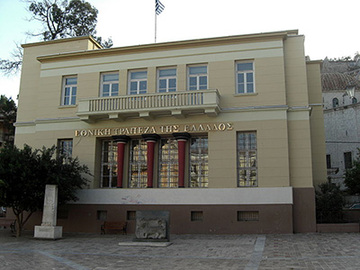More Culture Topics
- Ancient Greek Religion
- Greece Movie
- Greek Architecture
- Greek Art
- Greek Bible
- Greek Columns
- Greek Costumes
- Greek Culture
- Greek Jewellery
- Greek Key
- Greek Masks
- Greek Music
- Greek New Testament
- Greek Orthodox
- Greek Philosophers
- Greek Pottery
- Greek Radio
- Greek Religion
- Greek Sculpture
- Greek Tattoos
- Greek Temples
- Greek Theater
- Greek Tv
More Topic Categories
Related Destinations
Greek Architecture
 During the Archaic period, three main architectural orders were found in Greece; the Doric, the Ionic and the Corinthian order. These three types were distinguished by their aesthetics and decorative elements. The Doric order was mainly found in mainland Greece and Magna Graecia; being the simplest of the orders, its columns had plain capitals and austere lines. The Ionic order had more decorative elements, such as two scrolls on the column capitals and ornamented friezes. Finally, the Corinthian order was the most ornate of the three, with the column capitals bearing acanthus leaves and four scrolls.
During the Archaic period, three main architectural orders were found in Greece; the Doric, the Ionic and the Corinthian order. These three types were distinguished by their aesthetics and decorative elements. The Doric order was mainly found in mainland Greece and Magna Graecia; being the simplest of the orders, its columns had plain capitals and austere lines. The Ionic order had more decorative elements, such as two scrolls on the column capitals and ornamented friezes. Finally, the Corinthian order was the most ornate of the three, with the column capitals bearing acanthus leaves and four scrolls.Many centuries later, after the fall of Constantinople in 1453 AD, the main Greek architectural elements were only found in Greek Orthodox churches of Diaspora (the Greek communities outside the traditional Greek homelands). These buildings, however, were heavily influenced by the western European architecture. After the Greek War of Independence in 1821, Greek architecture combined local elements with western European movements, and was mostly influenced by Neoclassical architecture.
In more recent years, and more specifically in 1933, a manifesto of the modernist movement was signed, called the Athens Charter. Typical examples of architects participating in this movement included Ioannis Despotopoulos, Dimitris Pikionis and Patroklos Karantinos. During the 1960s and 1970s, the Hellenic Tourism Organisation (EOT) inaugurated the Xenia hotel programme; the design of those buildings was conceptualized by Aris Konstantinidis and was executed by his team. Unfortunately, the programme was abandoned later leading to the eventual demise of the buildings.
See Also:
 Athens Photos
Athens Photos
 Santorini Photos
Santorini Photos
 Crete Photos
Crete Photos
 Meteora Photos
Meteora Photos
 Corfu Photos
Corfu Photos






